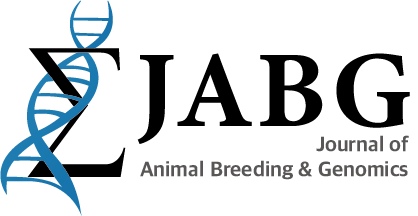Abstract
Breeding objectives are gradually changing according to the contemporary trends and the needs of the customer. Recently, the overall trend is focused on feed efficiency. Most breeding companies have either changed from traditional selection methods to the genomic selection method or are extremely interested in the adoption of this method. Genomic selection, which was first proposed in the 2000s, attempted to predict the genetic value of an animal based on genotypes in thousands of single nucleotide polymorphisms containing the whole genome. The method involves calculating the genomic estimated breeding value (GEBV) without considering the individual importance of each marker. For genomic selection, individuals with high-accuracy breeding values must be genotyped to form the reference group or training group through phenotypic records or progeny tests. Through this, an estimation of the marker effect is obtained, and is applied to the selected genotyped candidates to calculate the GEBV. A reference group with sufficiently reliable marker effect estimation value should be genotyped, and sufficient genotyping should be performed in the selected candidates to obtain an appropriate selection intensity. In addition, as genotyping requires considerable expenditure, there is also the need for a strategic system to optimize cost issues. One of the problems raised in pig genomic selection is that unlike in the case of cattle, most breeding pigs producing feeder pigs are crossbred. Therefore, for the genomic selection performed in GGP to be used in the actual feeder pig production environment, including nonadditive genetic effects that can explain heterosis in the statistical model can increase the reliability of the GEBV and reduce bias. Prospects for the introduction of genomic selection in pigs are likely to be of great benefit for traits with low heritability, or traits that are recorded only in a part of the population, i.e., litter size or health traits that are only recorded in females. In contrast, it is unlikely that the benefit will be significant for performance traits with moderate to high heritability or traits recorded using a part of the pig test program. Among the new trait improvement studies, breeding attempts against aggression are also ongoing. Reports have shown that fights suppress the immune system, increase the likelihood of disease, and lower feed intake, and advise guarding against the aggression trait. Another breeding attempt is to explore the relationship between gut microbiota and growth. Once you find out how the ratio of good and bad bacteria in the gut affects the growth, this is expected to bring about not only the improvement in the pig's health and simultaneous disease prevention, but also provide a solution directly related to maximizing the growth rate and improving feed efficiency, which are the main objectives of pig breeding.
Figures & Tables

Composition of selection index for 4 terminal lines in PIC.


